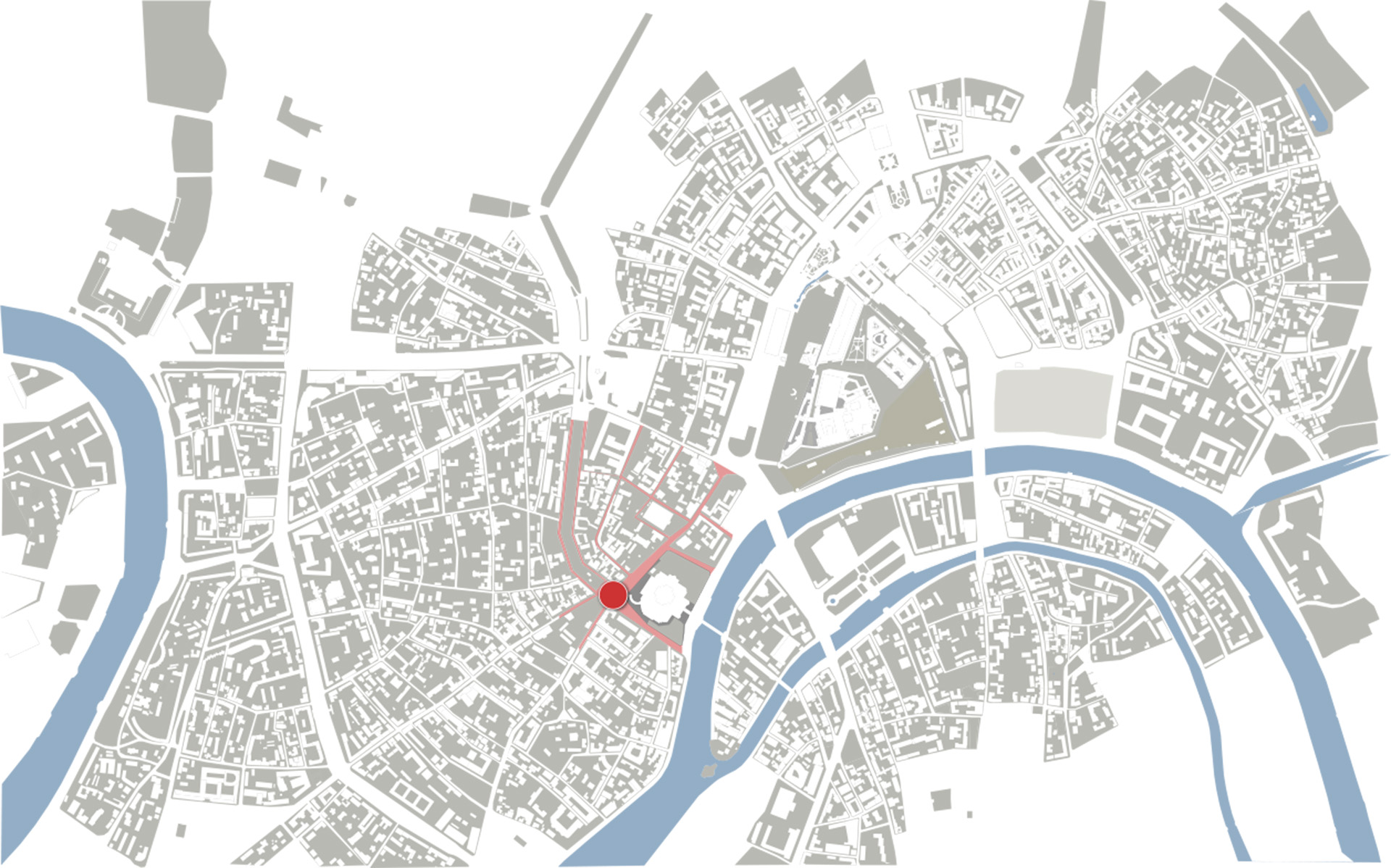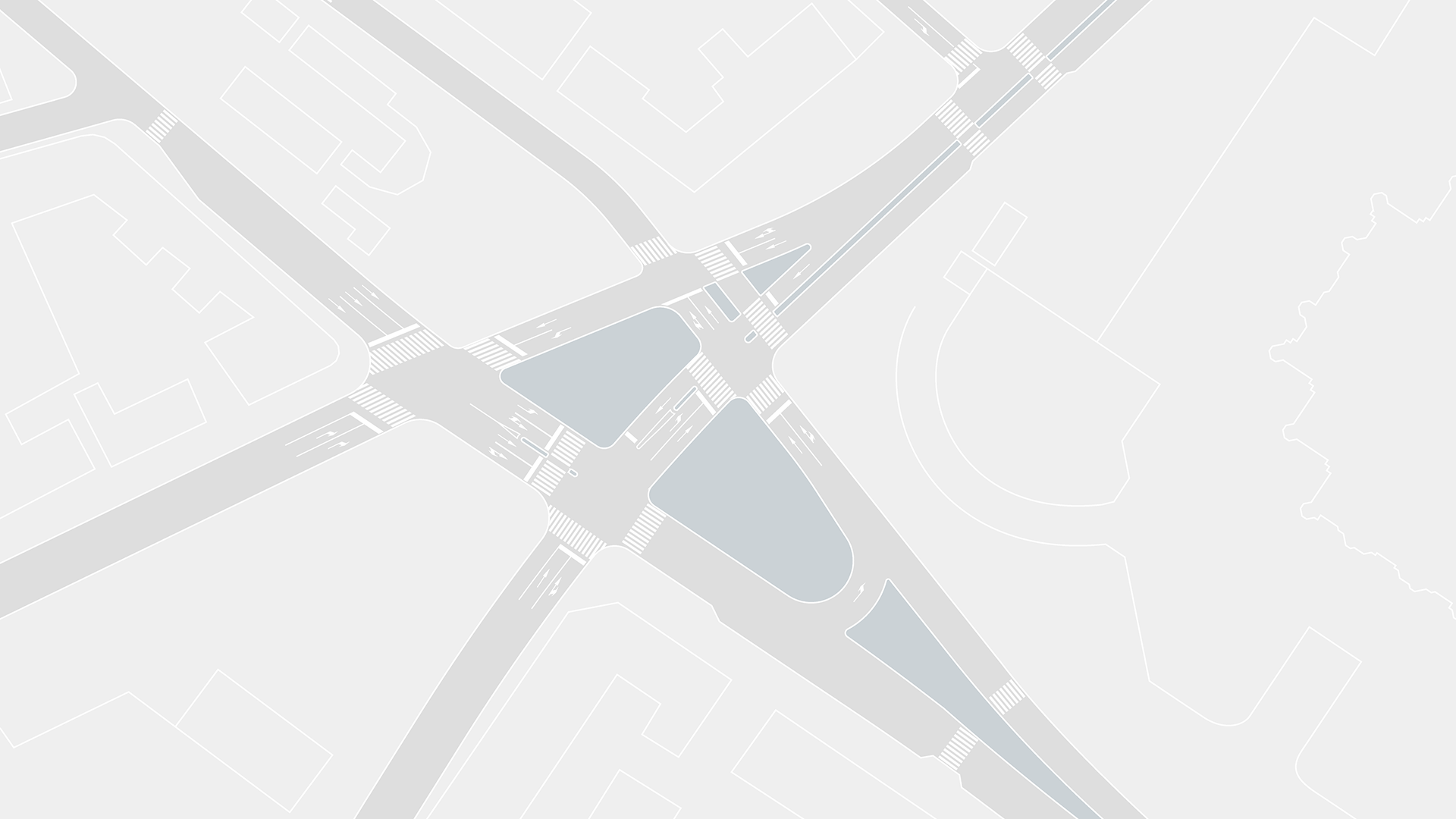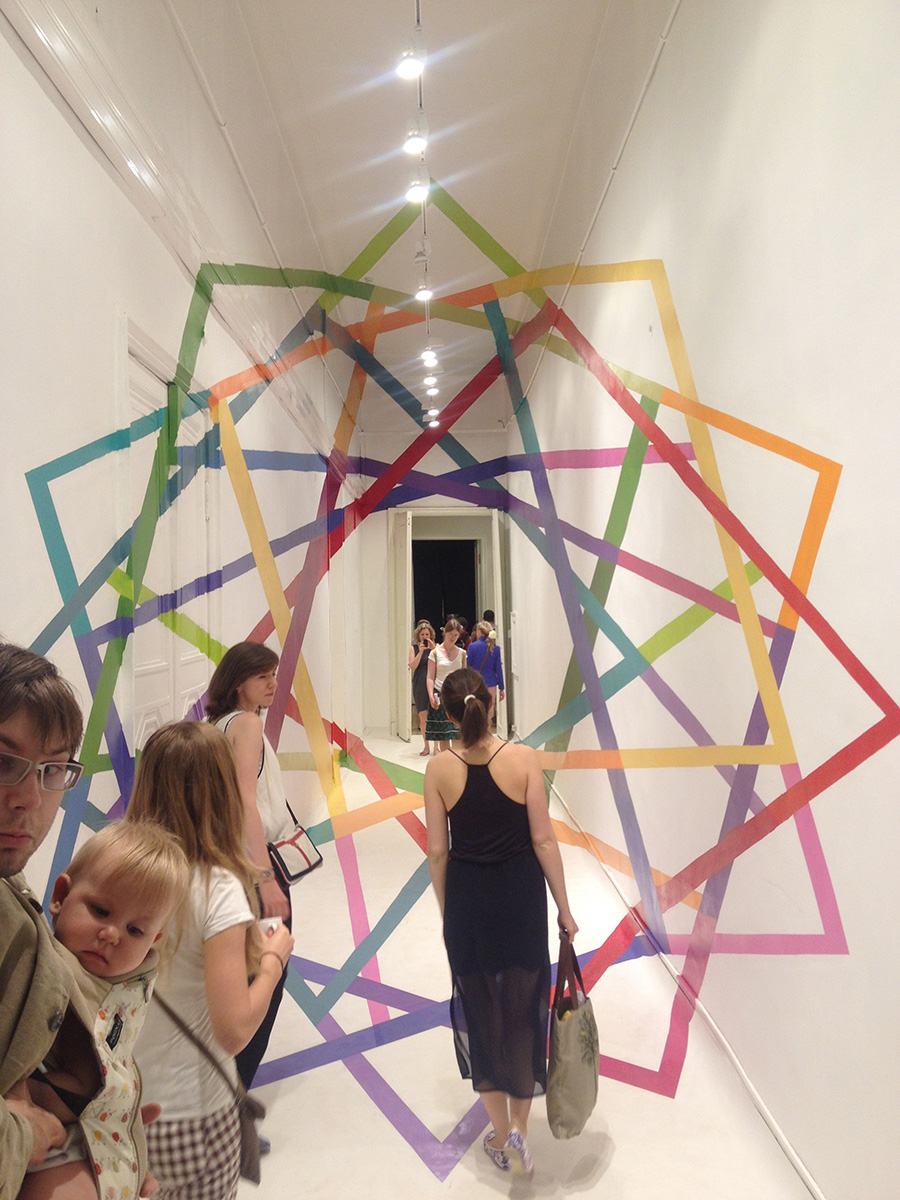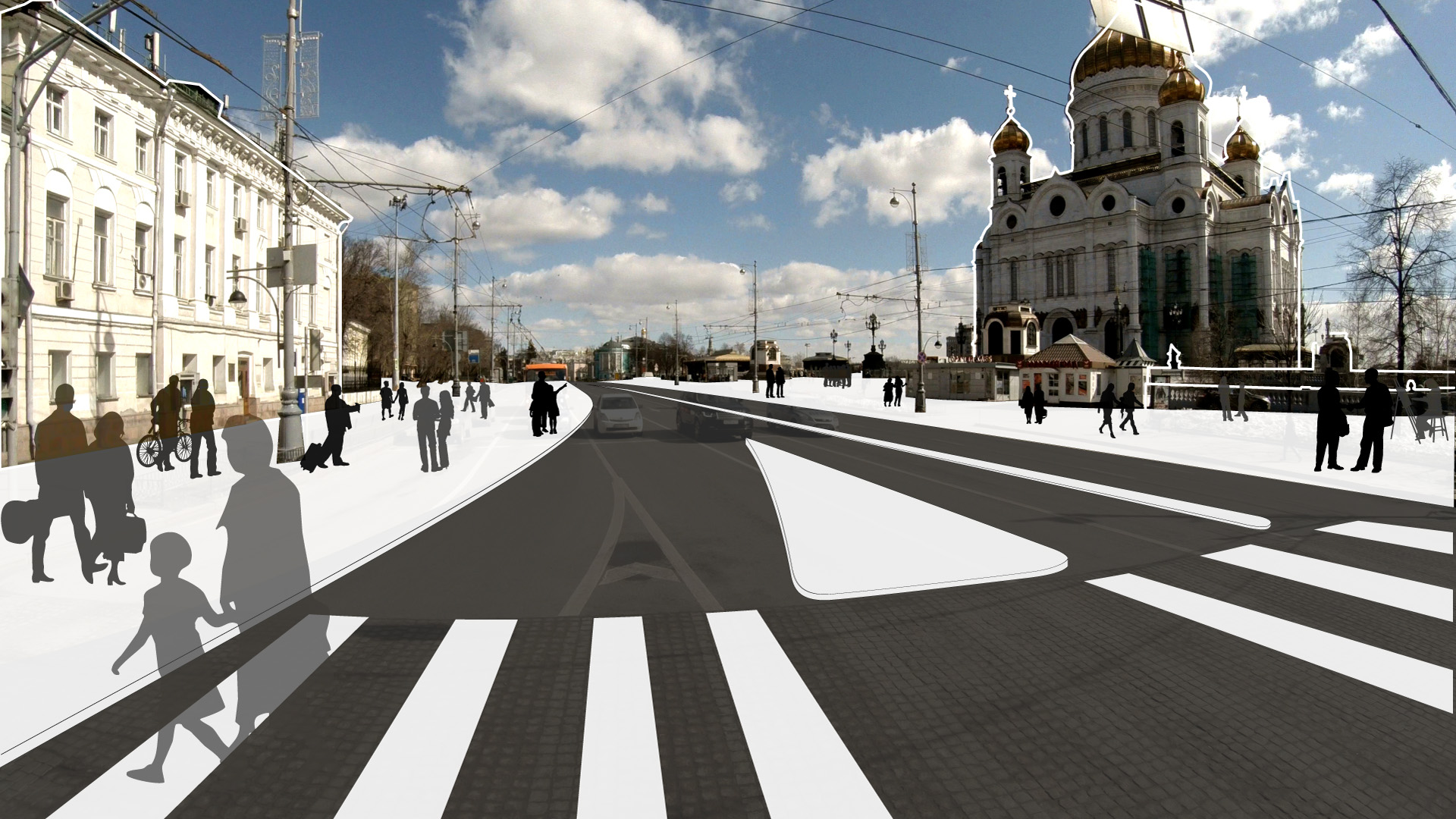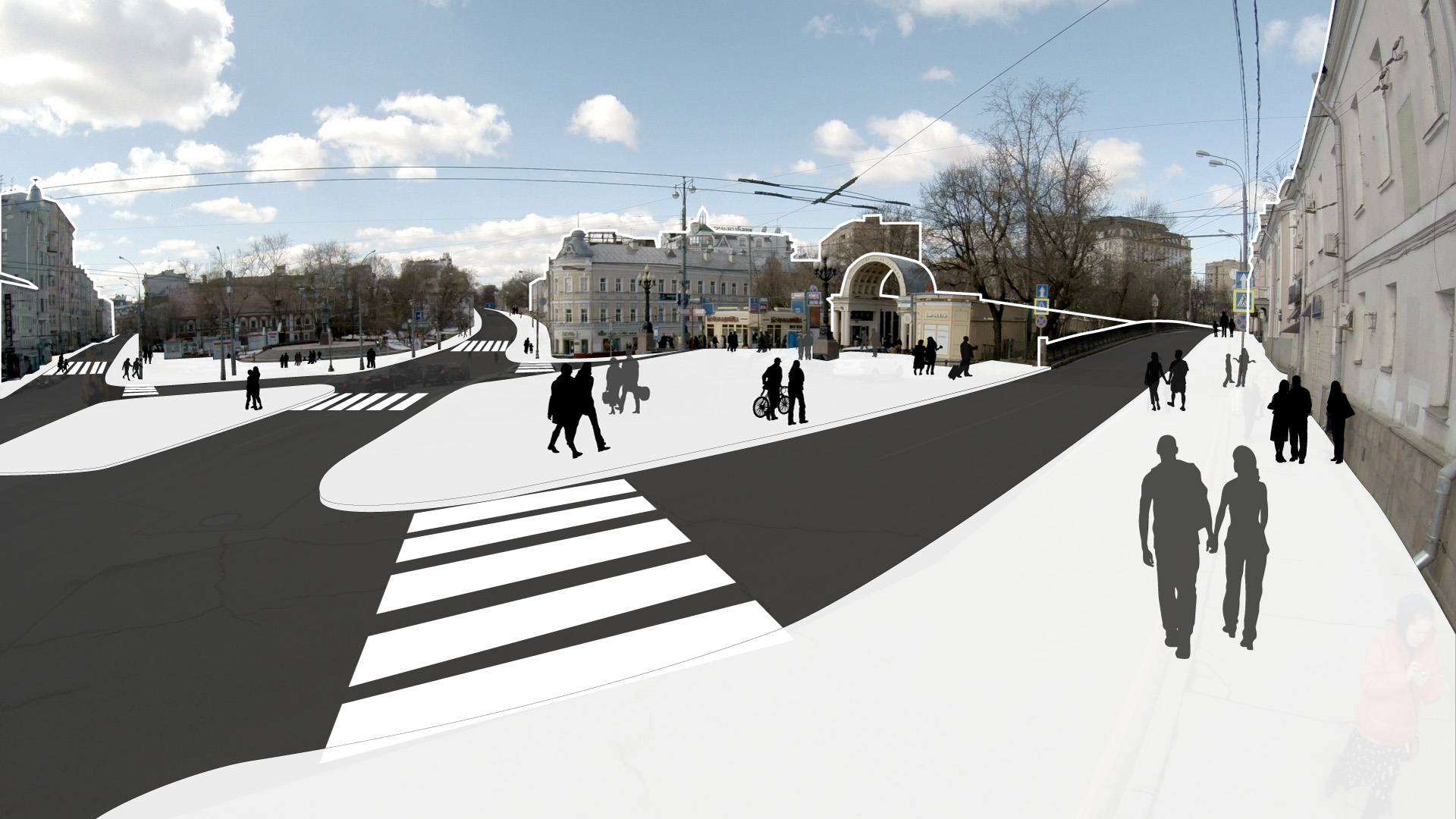White City Exhibition
Moscow
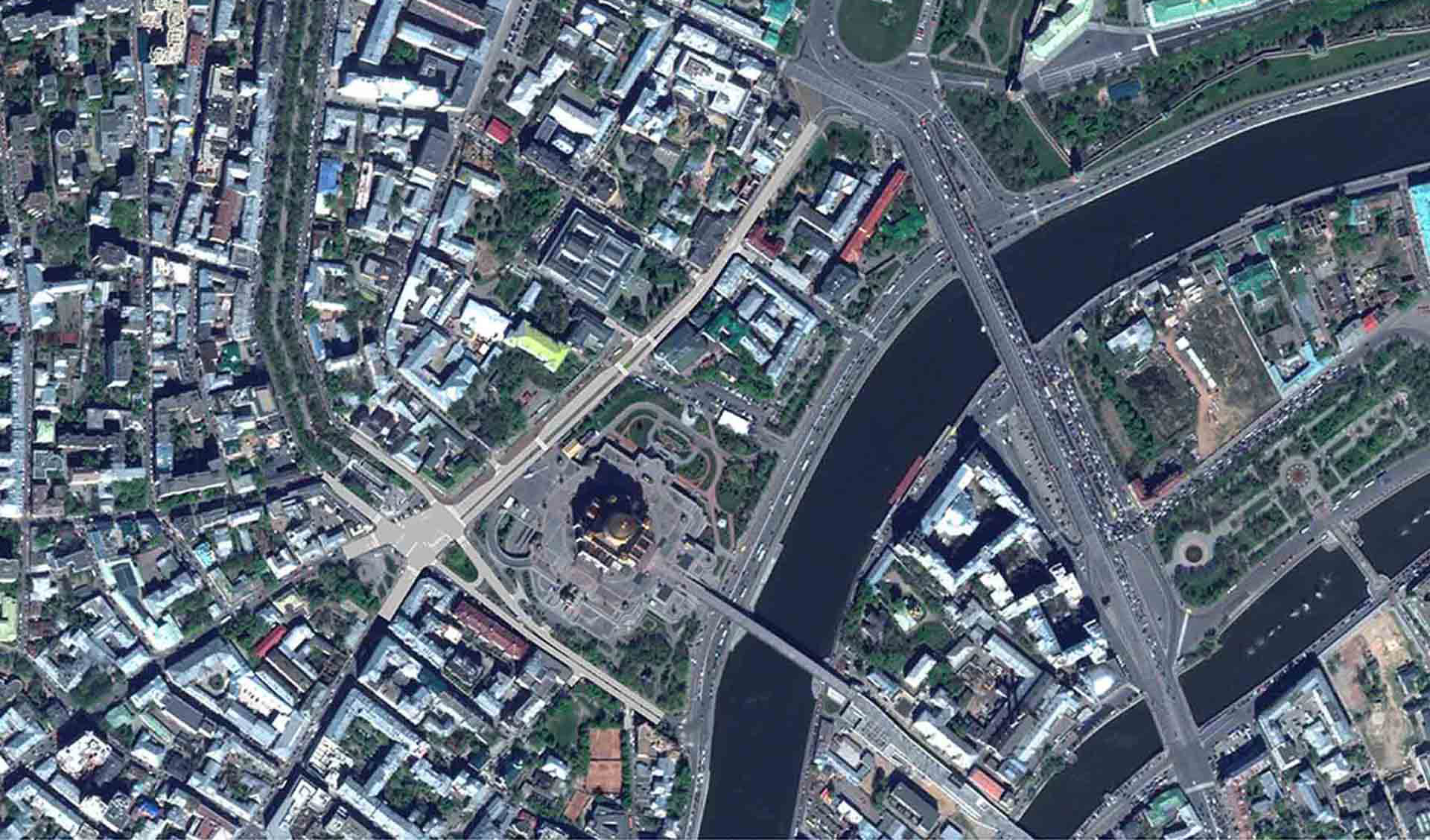
From a transport standpoint, the city of Moscow has one of its peculiarities in the direct penetration of some of the main primary urban axes into the city centre, without any downgrading nor of the infrastructure or of the traffic flows.
This condition strongly affects the urban quality and vocation of the project area, located in the proximity of some of the most important Russian landmarks, such as the Pushkin Museum or the Kremlin itself. The described transport framework brings in fact to the historical heart of town incredibly wide road sections, high traffic volumes and high vehicular speed, all characteristics clearly related to a deeply anti-urban and express type of connectivity.
In the frame of a multi-disciplinary urban requalification process of the White City area, the aim of the project is to reshape the space between the buildings, in order to support the great cultural human centred potential of the area with a consistent pedestrian oriented, safe and high quality road and urban environment.
Location
Moscow
Client
White City Exhibition
Main expertise
Research and Road Design
PROJECT HIGHLIGHTS
- Pedestrian and Cycle Studies
- Road Design and Streetscape
- Transport and Traffic Modelling
Project gallery
Our contribution
In this context, MIC-HUB is taking care of the mobility and transport planning, acting a redistribution of the different mobility flows, so to provide a more balanced usage of the space among the different users: pedestrians, non-motorized mobility, public transport and private transport.
Given the crucial location of the site, in doing so mic-hub is following a low-impact approach, where no new infrastructures are added to the area, but road design, parking strategy revision and maneuvers’ optimization is at the base of the process that leads to a revision of the road space in favor of pedestrian connectivity and public realm.
In developing the project, MIC-HUB has also supported the proposed reconfiguration through the implementation of a dedicated micro-simulation model. This quantitative exercise has also the role of assuring that all suggested modifications to the road layout and circulation can cope with the existing traffic flows.
The new White City area is focused on pedestrian and cyclist necessities, without disruption for the vehicular relations, that are related to wider city scale dynamics.
